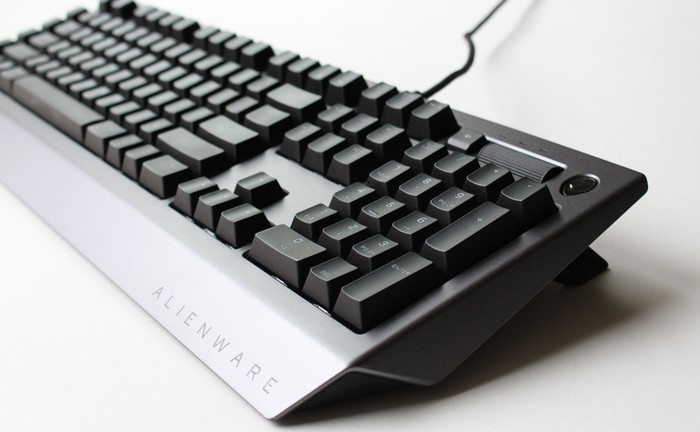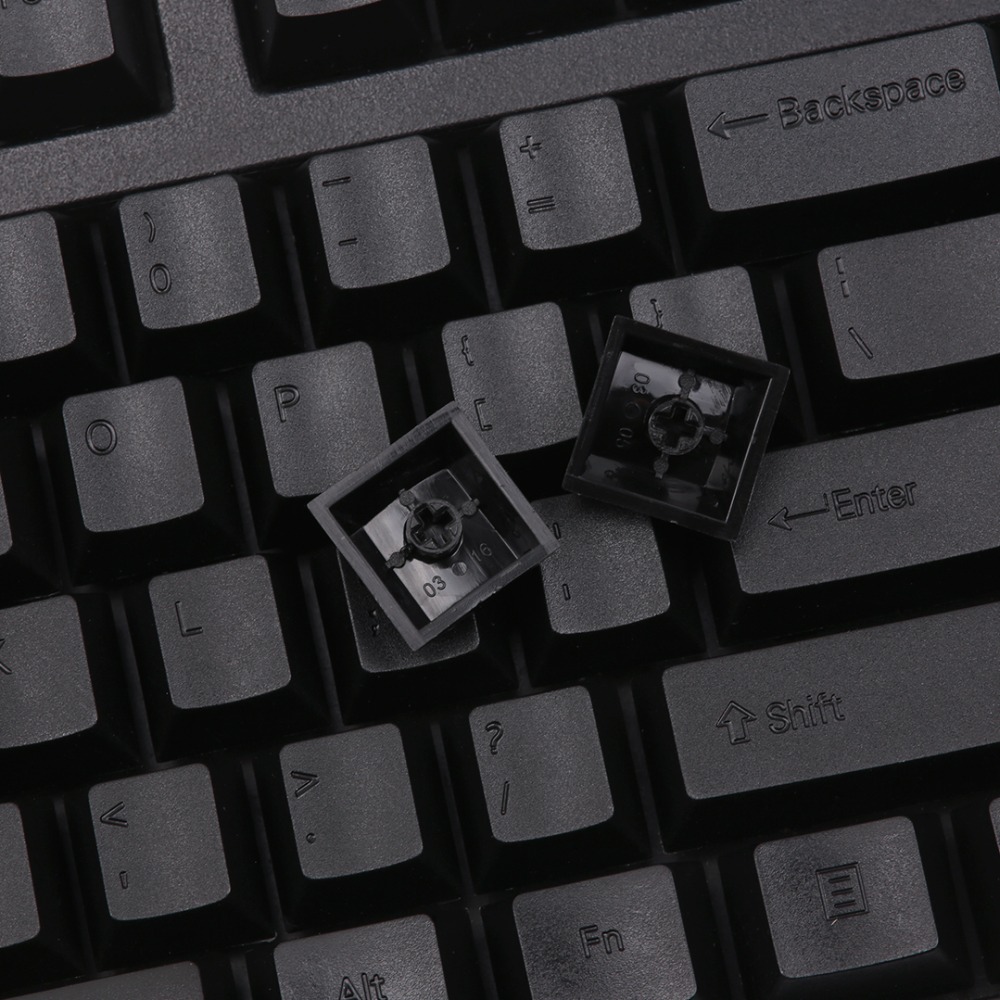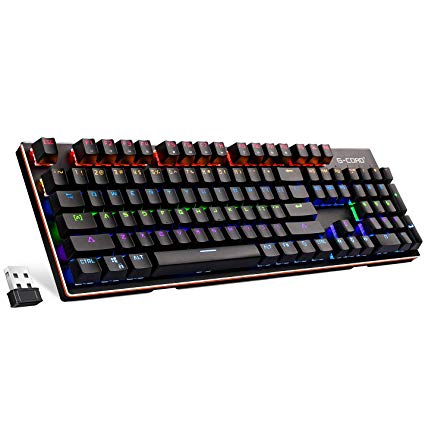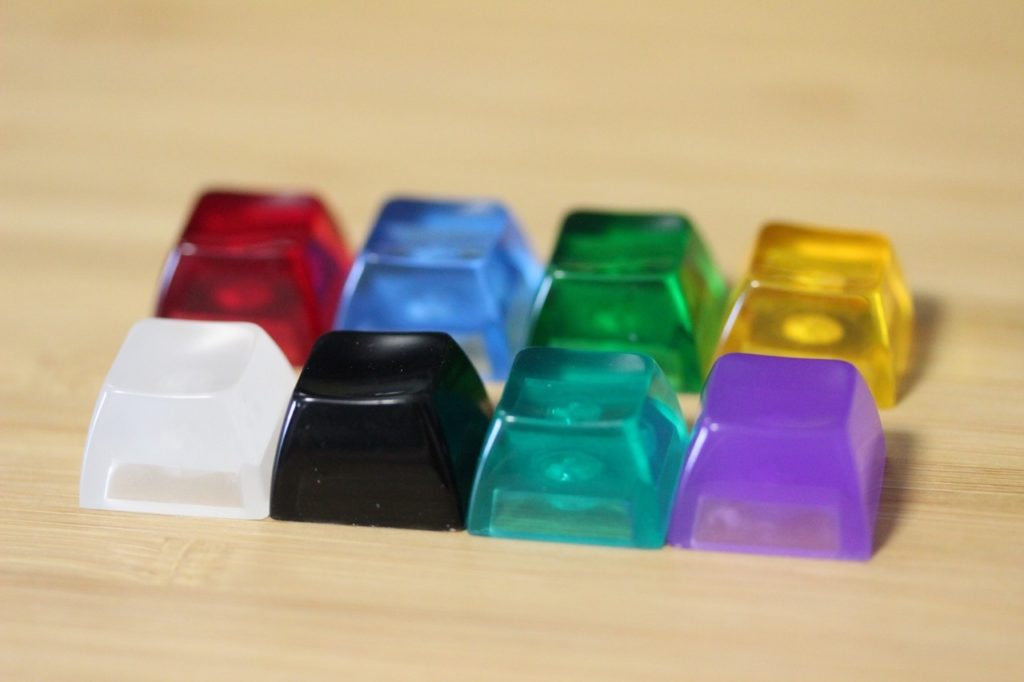Contents
In the past, we’ve looked at some of the best keyboards on the market. We’ve talked about mechanical vs. standard keys, N-key rollover, backlighting, and other useful features. But one thing we haven’t talked about is where the rubber meets the road. Or, more accurately, where your skin meets the keys. We’re talking about the material used to manufacture the keys themselves.
At first, this may sound silly. Who cares what the keys are made from? As long as they’re not carved out of wood like George Washington’s teeth, they should all be the same, right?
As it turns out, the different types of plastic used in your keyboard can make a huge difference. So we’re going to take a closer look.

What Are Your Keys Made of?
Many different materials are used to make keyboard keycaps. The lowest quality is PVC, the same material used to make plastic pipes and cheap plastic sheets. These keys tend to be very flimsy, and you’ll only see them on cheap, discount keyboards. If you’re using even a low-end gaming keyboard, you won’t have to worry about PVC.
On the very high end, you have POM, which is some of the toughest plastic on the market. This is uncommon because it’s very expensive. It’s basically a luxury item for people who can drop ridiculous amounts of money on their keyboard. But if you own a keyboard with POM keycaps, congratulations! You’ve got the best keys on the market.
Another choice is PC plastic, which is a tough, clear plastic used specifically for translucent keys.
You can learn more about all these materials in this article. But for our purposes, we’ll be talking about the two most common materials used on mechanical keyboard keycaps: ABS and PBT.

What is ABS?
ABS is short for “Acrylonitrile Butadiene Styrene”, which is a polymer that’s commonly used in all kinds of consumer products. It’s cheap to produce, it’s lightweight, and it’s durable enough to be used in wilderness survival equipment.
You’d think that if it’s good enough for real-world marines, it’s good enough for playing Call of Duty. And it is. But you’re not taking your keyboard into combat, and you’re probably not planning on hitting it with a hammer any time soon. As for being lightweight, there’s There are other factors that are more important than durability, like the weight, feel, and sound of your keys.
What is PBT?
PBT stands for “Polybutylene Terephthalate”, and we hope that’s the last time we ever have to subject our readers to an unpronounceable chemical name. It costs more to produce than ABS, but it’s heavier, and has better dimensional stability. Dimensional stability is what engineers call the ability of an object to hold its shape. This is an obvious advantage when you’re hammering on your WASD keys day in and day out.

How do They Perform?
Now that we’ve gotten a big picture look at ABS and PBT, let’s talk about what really matters: how they perform while you’re four hours into a five-hour PUBG session.
Noise
The first thing you’ll notice about a PBT keyboard is that it makes a deeper, chunkier sound than ABS when you hit the keys. For a good example, check out this video by YouTube user Richardlizhu:
As you can see, the PBT keys sound sturdier, while the ABS keys have a lighter, more hollow sound. This doesn’t make PBT better. Some people prefer a lighter-sounding key. But it does speak to a tougher design. Higher-pitched sounds also carry further, meaning that even though PBT keys are louder, they won’t sound as loud on the other end of a chat channel.
Weight
PBT keys weigh almost twice as much as ABS keys. Now, we’re not suggesting you use your keyboard as a weightlifting accessory. But we are saying that a heavier key will tend to have a smoother response, which makes for a better feel while you’re playing your game.
That said, like a lot of differences between these two materials, this is a matter of opinion. If you prefer a lighter touch, you’ll probably prefer ABS keys. But at least now you know what you’re getting.
Key Shine
Key shine is what happens when you use an ABS keyboard for a long period of time. You’ve probably noticed this on your own keyboard if you’ve used the same one for a year or more.
The reason for this shine is that oil from your fingers collects in the tiny indents in the keys’ texture. Over time, this makes the surface of the keys completely smooth, and they reflect more light than they did when they were new.
This isn’t just a cosmetic problem, though. As you can imagine, smooth keys can lead to slippery fingers. That’s not a big deal on an office keyboard. But when a single missed keystroke can make the difference between getting a headshot and getting shot in the head, do you really want your own keyboard giving you butter fingers?
Durability
As we’ve already mentioned, PBT has better dimensional stability than ABS, so the keys won’t deform as quickly under repeated use. To be fair, we’ve never met anyone who needed to replace their keycaps because they literally got bent out of shape. But it’s still worth mentioning.

Our Verdict
At the end of the day, which type of keycaps you use is going to be a matter of personal preference. If you like a lighter, quieter keystroke, a set of ABS keycaps may be just fine for your purposes. If you prefer a heavier, louder keystroke, you’ll probably prefer PBT. That said, PBT won’t turn shiny, which means you won’t need to replace your keys as often, if ever. And that means you’ll get more bang for your buck.
Does this make PBT the best? Not necessarily. But it does make it the better value of the two options, even at a slightly higher price point.


